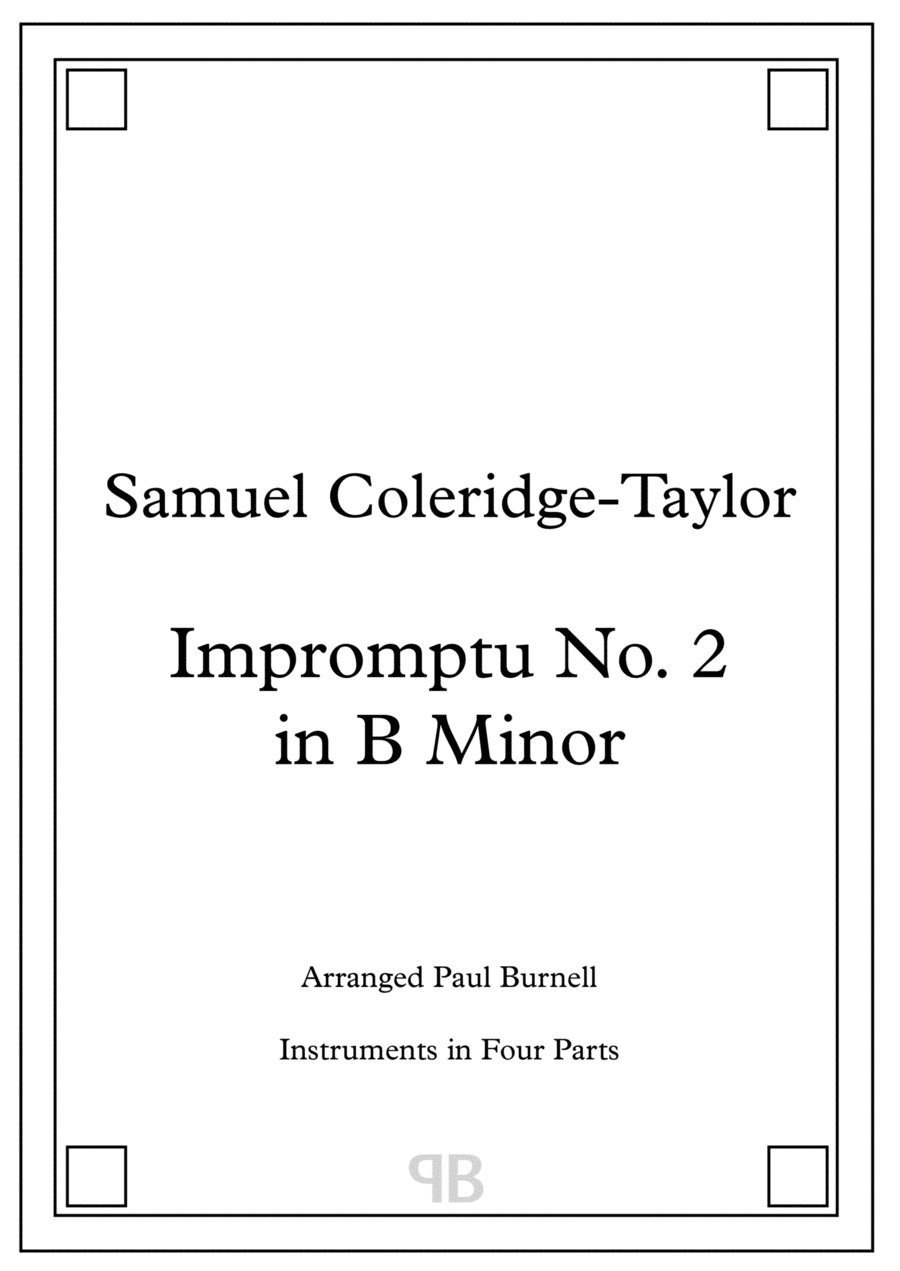Small Ensemble - Level 3 - Digital Download SKU: A0.978823 Composed by Samuel Coleridge-Taylor. Arranged by Paul Burnell. 20th Century,Classical. Score and parts. 36 pages. Paul Burnell #584486. Published by Paul Burnell (A0.978823). Impromptu No. 2 in B Minor, Samuel Coleridge-Taylor, arranged by Paul Burnell for instruments in four parts. Download comprises both score and parts. Duration 4:00 Score in C The arrangement is suitable for multiple quartet combinations with parts available (and potential instrumentations suggested) as follows: Part 1: C, Eb (Flute, Oboe, Alto Recorder, Eb Clarinet, Violin 1) Part 2: C, Bb, G (Alto Flute, Oboe, Tenor Recorder, Bb Clarinet, Violin 2) Part 3: C, Bb, Eb, F (Bb Clarinet, Bass Recorder, Alto Saxophone, Horn in F, Violin 3, Viola) Part 4: C, Bb, F (Bassoon, Great bass Recorder, Tenor Saxophone, Horn in F, 'Cello) Part 4 may be played or doubled an octave lower than written - using the 'Bass Clef up 8' part. Any other appropriate instruments, even if not suggested above, may play. Play cue-sized notes in brackets where main notes are out of range or inconvenient. Programme note: Impromptu No. 2 in B Minor by English composer Samuel Coleridge-Taylor (1875 â 1912) was first published in 1911 as one of two Impromptus for piano. In 1916 the piece appeared as '2nd Impromptu', transcribed by Arthur Eaglefield-Hull, in the first book of an album of organ versions of Coleridge-Taylor's compositions. Neither the piano or organ version of the B Minor Impromptu has a printed Opus number, and is different to Coleridge-Taylor's Impromptu No. 2 Op.78 which is in C Major and part of a set of three Impromptus for organ, also published in 1911.
